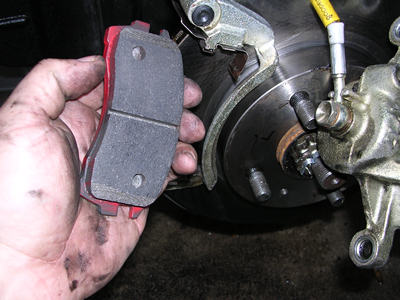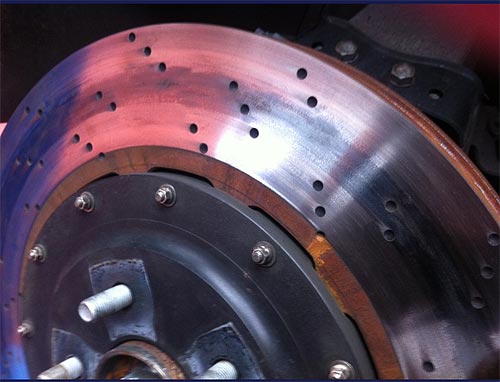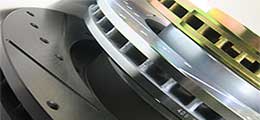
In this article, we are going to explain the basics of brake pad bed in and brake-in. The information listed in this article will apply to most brake pad installations for street vehicles.
The purpose of brake pad bedding is simple; a layer of brake pad material must exist on the brake rotor for proper friction to be generated between the pad and rotor. During any usual brake pad bed in procedure, brake pads are heated and cooled again through a series of braking applications.
This process ensures that an even coat of brake pad resin ends up on the brake rotor surface which allows brake pads to do their job. If a driver rushes this procedure or forgets to do it altogether, an uneven amount of pad material will wind up on the brake rotor and cause a very lackluster performance in braking.
Uneven Brake Pad Resin Transfer Example
*source: ebcbrakes.com

A series of braking applications are used to bed in brakes because it takes a significant amount of heating to “cook” a brake pad and release its resins. If a driver tries to apply their brakes too hard- too soon during this bed in process and pad heating, an uneven amount of pad material will be transferred.
The procedure taken to bed in a set of brake pads consists of a series of 10 braking applications. Each braking period takes the brake pads to a higher degree. Each stop will be initiated from near highway speeds, and with a moderate application of braking intensity. The vehicle should not come to a complete stop for each braking period, but close to it.
Brakes should also not be allowed to completely cool in between braking periods in series. The final brake application in the series should include a near locking of the brakes even though a complete locking of the brakes is prohibited in any stage.
For the best results when bedding in brake pads, one should repeat each set of 10 vehicle deceleration periods 2 or even 3 times in total. For each series of brake applications, a thicker layer of pad material will be built up on the brake rotors. If a good coat of brake pad material was not applied on the rotor during the first set of braking, then the second or third set will ensure this has happened.
Once brake pad material has been successfully transferred to the brake rotor, and in sufficient quantity, brake pad maturation must follow. With another set of heavier brake pedal compressions, the brake pad will begin to take on another composition at the surface, and become eligible for any amount of braking intensity.
After a proper pad bed procedure and pad maturation period, you can then receive the highest level of performance possible from a new brake pad installation.









